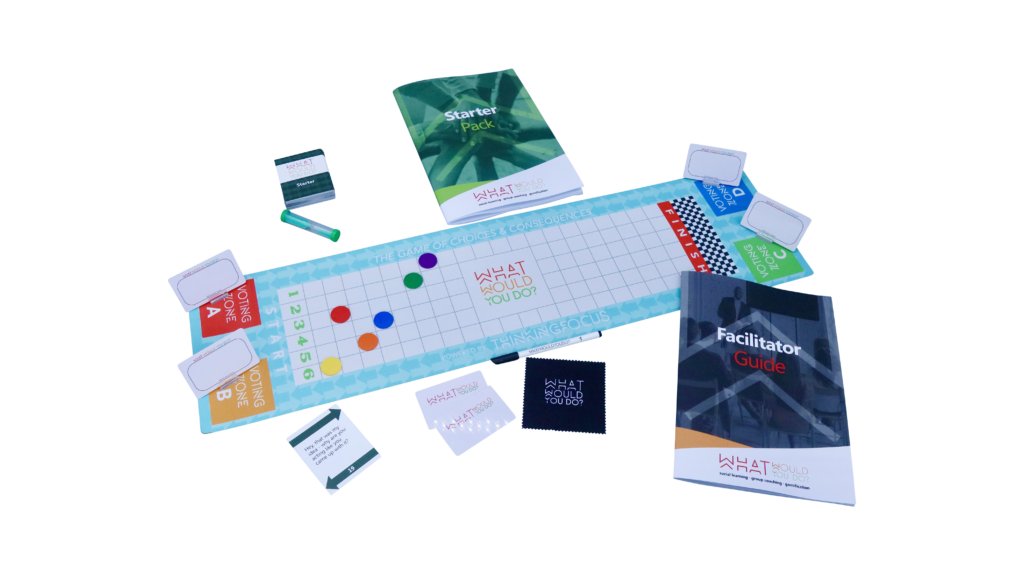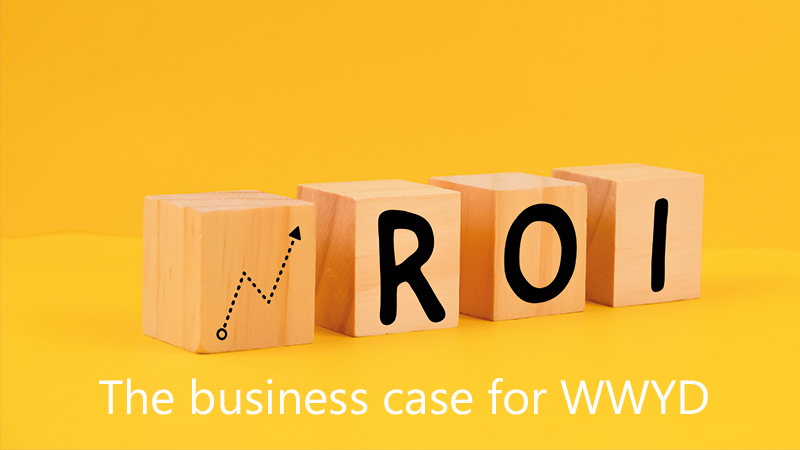WWYD Creates Conversations
WWYD is all about creating conversations that change behaviour. WWYD has carefully crafted scenarios that set a cognitive frame to start the discussion. Each scenario sets the scene before asking participants to vote against four imperfect options. The aim is to disrupt thinking, to cause players to socialise their inner conflict and drive to a shared view of what good looks like for a given situation. Each option attracts points*, creating friendly competition that maintains interest, motivation and engagement throughout a WWYD session. Points accumulate against a leaderboard (game mat or online leaderboard) which underpins the attention and interest.
Every scenario includes a debrief to allow the group to reflect and consolidate their learning. The session concludes with individual reflection and public commitment to change one thing as a result of their learning. The public sharing reinforces the internal commitment to following through – nobody likes to be seen to act incongruent with what they’ve said for fear of being judged.
*WWYD Conference Edition doesn’t use points; it focuses on the discussion and shared learning experience. Tracking points and displaying leaderboards are impractical when playing with up to 200 people and detract from the overall experience.
How WWYD works
Playing WWYD


Whichever edition of WWYD you choose, the process is the same. There are three core steps:
Discussion
A facilitator shares a scenario with the players, these are either picked randomly or preselected beforehand. The facilitator then guides the group through a discussion, where players share their opinions, perspectives, and personal experiences. The facilitator plays a vital role in challenging assumptions and encourages the group to explore ‘what if’ for different courses of action.
Decision
Players vote on a set of imperfect options. Their choice earns points, or it could lose them points as they move up (or down) the leaderboard.
The debate continues as they explore the merits of each option, identifying what makes a course of action right or wrong – in other words,’ show your workings out.’
Some scenarios are on the clock. Players have a short time to decide or be frozen out of the round! But, it all adds to the fun.
Reflection
Learning embeds through reflection; players reflect on what they have taken from the session and each other. They commit to changes in their behaviour in front of each other.
How WWYD works



